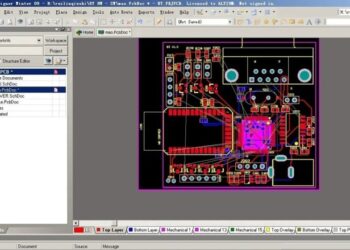In today's digital age, AR-Powered Product Displays have emerged as a game-changer, offering a unique way to captivate users and enhance their experience. Dive into this innovative technology as we explore how it transforms the landscape of product showcasing and boosts user engagement to new heights.
As we delve deeper, we uncover the intricacies of AR integration in product displays and how it shapes the future of user interaction.
Introduction to AR-Powered Product Displays
AR-powered product displays utilize augmented reality technology to enhance the user experience when interacting with various products. By overlaying virtual elements onto the real world, AR technology brings products to life in a way that traditional displays cannot match.
Enhanced User Engagement
Augmented reality technology enhances user engagement by providing an interactive and immersive experience. Users can visualize products in a realistic manner, allowing them to see how products would look in their own environment before making a purchase. This interactive element increases user interest and encourages longer engagement with the product.
Industry Examples
Various industries are utilizing AR technology for product showcasing, including:
Retail
AR-powered product displays allow customers to virtually try on clothing or accessories without physically trying them on.
Real Estate
AR can be used to visualize how furniture or decor items would look in a potential home before buying.
Automotive
Car manufacturers use AR to showcase different car models and customization options in a virtual showroom.
Benefits of AR in Product Displays
Incorporating AR into product displays offers several benefits, such as:
- Increased customer engagement and interaction with products.
- Enhanced visualization of products in real-world settings.
- Improved decision-making for customers by providing a more immersive shopping experience.
- Differentiation from competitors by offering a unique and innovative way to showcase products.
Implementation of AR in Product Displays

Implementing AR technology into product displays can greatly enhance user engagement and provide a unique shopping experience. Businesses looking to create AR-powered product showcases can follow these steps:
Integrating AR Technology
To integrate AR into product displays, businesses need to start by choosing the right AR platform or software that aligns with their goals. They should then create 3D models of their products to be used in the AR environment.Next, businesses need to determine the hardware requirements for AR implementation.
This includes selecting compatible devices such as smartphones or tablets that support AR experiences. Additionally, businesses may need to invest in AR glasses or headsets for more immersive displays.
Creating AR-Powered Product Showcases
Businesses can create AR-powered product showcases by developing interactive AR applications that allow users to view products in a virtual environment. This can include features such as 360-degree product views, product customization options, and virtual try-on experiences.Furthermore, businesses should optimize their product displays for mobile devices to ensure a seamless AR experience for users.
This involves testing the AR applications on different devices and screen sizes to guarantee compatibility and functionality.
Best Practices for Designing AR-Enhanced Product Displays
When designing AR-enhanced product displays, businesses should focus on creating intuitive user interfaces that are easy to navigate. They should also prioritize high-quality 3D models and realistic product renderings to provide a lifelike experience for users.Moreover, businesses should leverage AR technology to provide additional product information, such as pricing details, specifications, and customer reviews.
This can help users make informed purchasing decisions while exploring the AR-powered product displays.By following these steps and best practices, businesses can effectively implement AR technology in product displays to enhance user engagement and drive sales
User Experience with AR-Powered Product Displays
AR technology has revolutionized the way users interact with products, providing a more immersive and engaging experience. By overlaying digital information onto the physical world, AR enhances user interaction with products in a way that was previously unimaginable. This not only captures the attention of users but also keeps them engaged for longer periods of time, ultimately leading to increased retention rates.
Impact of AR on User Engagement and Retention
AR significantly impacts user engagement and retention by offering a unique and interactive way for users to explore products. The ability to visualize products in a real-world setting before making a purchase decision increases user engagement and creates a memorable experience.
This, in turn, leads to higher retention rates as users are more likely to remember and revisit brands that offer such innovative experiences.
Case Studies of Businesses Improving User Experience through AR Displays
Numerous businesses have successfully leveraged AR technology to enhance user experience and drive sales. For example, Sephora's Virtual Artist app allows users to try on makeup virtually, providing a personalized shopping experience that boosts engagement and increases customer satisfaction. Similarly, IKEA's AR app lets users visualize furniture in their own homes, leading to a more informed purchasing decision and ultimately improving brand loyalty.
How AR Influences Purchasing Decisions and Brand Loyalty
AR plays a crucial role in influencing purchasing decisions by providing users with a more interactive and immersive shopping experience. When users can visualize products in their own space or try them on virtually, they are more confident in their purchase decisions, leading to increased conversion rates.
Additionally, the unique and memorable experience offered by AR displays fosters brand loyalty as users are more likely to return to brands that provide such cutting-edge technology.
Future Trends in AR-Powered Product Displays
Augmented Reality (AR) technology is constantly evolving, offering exciting possibilities for product showcasing and display. As we look towards the future, several trends are expected to shape the landscape of AR-powered product displays.
Advancements in AR Technology
The future of AR-powered product displays will likely see advancements in technology that enhance user experiences. Features such as improved object recognition, real-time data integration, and more realistic virtual overlays are anticipated. These advancements will not only make product displays more interactive and engaging but also provide more accurate and detailed information to users.
Growth of AR-Powered Displays Across Industries
AR-powered product displays are expected to gain traction across various industries, beyond just retail. Sectors like real estate, automotive, healthcare, and education are likely to adopt AR technology for showcasing products in innovative ways. This expansion into different industries will revolutionize the traditional methods of product marketing and sales, offering a more immersive and personalized experience to consumers.
Revolutionizing Product Marketing and Sales
The integration of AR in product displays is set to revolutionize the way products are marketed and sold. With AR, businesses can create interactive and visually appealing presentations that allow customers to virtually experience products before making a purchase. This immersive shopping experience not only increases engagement but also boosts conversion rates by providing a better understanding of the product's features and benefits.
Evolution of AR-Enhanced User Experiences
AR technology is poised to evolve user experiences by providing more customized and personalized interactions. Future trends may include AI-driven recommendations based on user preferences, enhanced virtual try-on experiences, and seamless integration with other technologies like voice assistants. These advancements will create a more seamless and intuitive shopping experience, making AR-powered product displays an indispensable tool for businesses looking to stand out in a competitive market.
Concluding Remarks
In conclusion, AR-Powered Product Displays pave the way for a dynamic and immersive user experience, setting a new standard for engagement and interaction. Embrace the possibilities that AR technology offers and stay ahead in the ever-evolving digital realm.
Popular Questions
How does AR technology enhance user engagement?
AR technology enhances user engagement by providing interactive and immersive experiences that captivate users and create a lasting impact.
What are the benefits of incorporating AR into product displays?
Incorporating AR into product displays enhances customer engagement, boosts brand visibility, and sets businesses apart in a competitive market.
How does AR influence purchasing decisions and brand loyalty?
AR influences purchasing decisions by allowing customers to visualize products in real-world settings, leading to more informed buying choices and increased brand loyalty.












